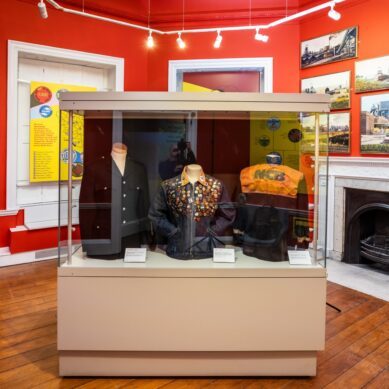With garden designer, Sally Cunis
If, like me, you are a keen gardener but the height of summer has you sneezing, reaching for the tissues and the antihistamine, then help is at hand.
According to research into hay fever by various bodies, by understanding which main groups of plants trigger our reaction to pollen in the atmosphere, there are ways of improving the situation in individual gardens by selecting plants more suited to allergy sufferers.
Pollen grains (which derive from the male reproductive part of a plant) are generally either wind borne or picked up on the bodies of beneficial insects such as butterflies and bees.
Many trees such as London Plane, Birch, Ash, Hazel and common conifers rely on wind pollination; the pollen is released in clouds as fine as dust in an attempt to fertilise flowers or cones to create a new plant. It is not a very efficient means of reproduction, hence the vast quantities of pollen produced; they saturate the air and affect those of us prone to hay fever. Catkins are an easy way to spot a wind pollinated tree. Grasses have become increasingly popular with the rise in interest in gardening for wildlife and prairie planting, mixed with umbellifers like wild carrot, Ammi majus and cow parsley. However, grasses do produce a great deal of pollen.
The direction to take in planting a garden for allergy sufferers would appear to be to source, wherever possible, trees and plants that are primarily pollinated by beneficial insects rather than by wind.

In terms of trees, there is a good selection available. Fruit trees are pollinated by insects and have the added advantage of flowers in spring, edible fruit and, in the case of some crab apples, autumn colour. They can be bought as patio trees for pots or step-overs, making them suitable for the smallest of plots. If space isn’t a problem, the Tulip tree with cup and saucer flowers, willow or cherry are all lovely. As an alternative to grasses, consider ferns, alliums, iris or Armeria maritima (sea thrift) a clumping grass-like plant with neat pin shaped flowers.
In general, flowers with a strong fragrance such as lilies, sweet peas, Daphne and roses have evolved to attract insect pollinators. Although roses are laden with pollen, thankfully their pollen particles are too heavy to be wind borne. I love roses and grow many different varieties, under planted with hardy geraniums, Penstemons, Nigella, Lavender and Vinca with a backdrop of Clematis all of which are insect pollinated. Under planting helps to suppress nettles and other weeds which, although attractive to butterflies, are wind pollinated.

Foxgloves, Astrantia, pansy, Aquilegia, lupins, mint and most herbs are all suitable. Sadly many of the daisy family (Asteraceae), Chrysanthemum, sunflower and Michaelmas daisies to name a few are wind pollinated.
There are some attractive shrubs for the garden which suit allergy sufferers. Viburnums are wonderful for spring and early summer with a strong scent. Camellia and Azalea are good for colour and an acidic soil. Hardy Fuchsias delight with their lantern flowers in red and purple whilst Hydrangea and Magnolia cannot be beaten for their mainly white and cream flowers.

Whilst it is not possible to alter the environment beyond the boundaries of your own garden, it is worth considering what changes might be worth making in your own plot if hay fever is an issue. This is of course only one of the allergies gardeners have to contend with! There is also the problem of contact dermatitis or urticaria when one has a reaction to touching a plant in the garden such as the irritant sap of a Euphorbia, the leaves of the Giant Hogweed, or a bad reaction to any plant from the potato family (Solanaceae) such as tomato plants. But perhaps that is for another day…
Until then it is on with the long sleeves, gardening gloves and maybe a facemask.
Happy gardening









